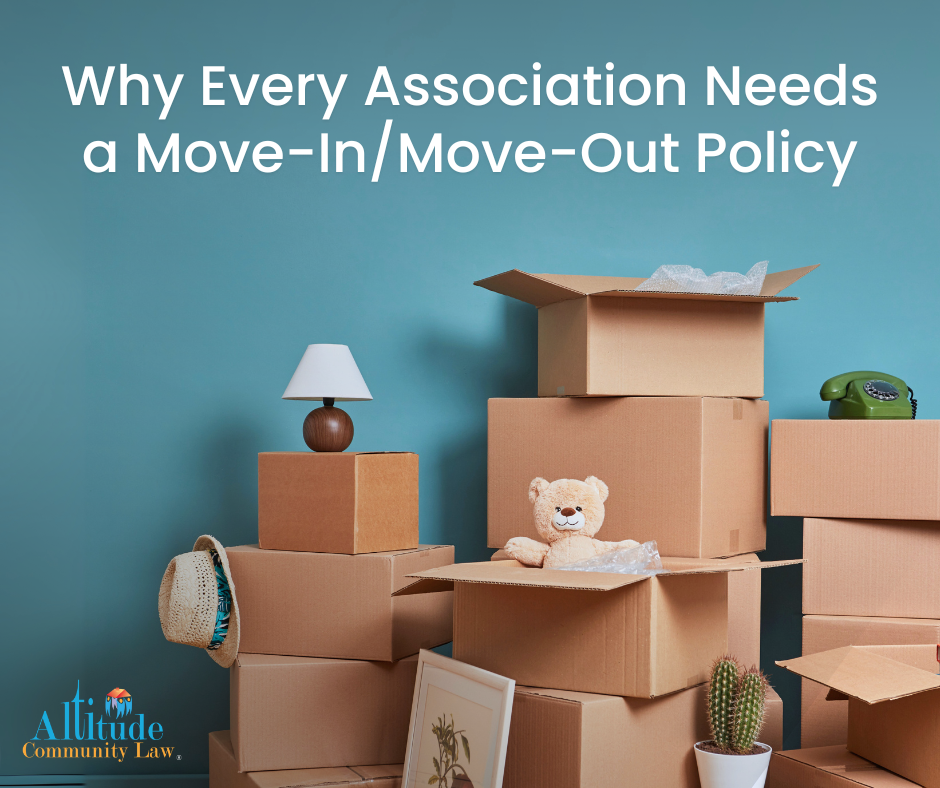
As community associations strive to maintain the quality, cleanliness, and financial health of their communities, one area that often goes overlooked is the impact of residents moving in and out. Without structure, frequent moves can cause unexpected wear and tear on common elements, improper waste disposal, and unanticipated costs for the association.
What Is a Move-In/Move-Out Policy?
A Move-In/Move-Out Policy outlines clear procedures and responsibilities for owners, tenants, and property managers during transitions in occupancy. A typical policy generally includes:
- Completion of a move-in/move-out checklist;
- Notification to the association of scheduled move dates;
- Payment of a refundable moving fee or damage deposit;
- Inspection of common areas after the move; and
- Assessments for damage or excess waste disposal.
By formalizing the moving process, associations can better preserve their property, ensure fair financial responsibility, and minimize disruption to residents.
What are the Benefits of a Move-In/Move-Out Policy?
- Protecting Common Elements. Moves often involve large furniture, equipment, and heavy foot traffic that can damage hallways, elevators, entryways, and dumpster areas. A Move-In/Move-Out Policy allows the association to monitor these impacts and recover costs when needed.
- Managing Waste. Improper disposal of boxes, furniture, and personal items during a move can overwhelm dumpster capacity, resulting in costly overage fees from waste management providers. A Move-In/Move-Out Policy ensures residents are aware of proper disposal guidelines and that any resulting costs are billed to the responsible party, not the entire community.
- Financial Responsibility and Fairness. Requiring a refundable move fee or damage deposit (e.g., $500) creates an incentive for residents to move carefully and responsibly. After a post-move inspection, the association refunds any unused portion, charging only for actual damages or costs incurred. This ensures that the community’s shared financial resources aren’t unfairly burdened by one individual’s actions during the moving process.
- Preserving Community Aesthetics and Peace. Coordinated move-in/move-out procedures help reduce noise, congestion, and inconvenience for other residents. Structured scheduling can prevent multiple large moves on the same day, protecting parking availability and reducing strain on elevators and other shared spaces.
- Promoting Accountability. By requiring owners or tenants to notify the association of a move, the association can proactively schedule inspections, monitor common areas, and respond quickly to issues. This level of oversight enhances transparency and strengthens community standards.
Moves are inevitable—but damage, disorder, and unfair costs don’t have to be. A well-crafted Move-In/Move-Out Policy helps community associations set clear expectations, preserve shared spaces, and protect all residents.
If your community doesn’t have a policy yet, it may be time to consider adopting one. It’s a simple step that yields long-lasting benefits.
Please contact an Altitude attorney at 303.432.9999 or [email protected] if you have any questions on the above or any other legal needs for your association.